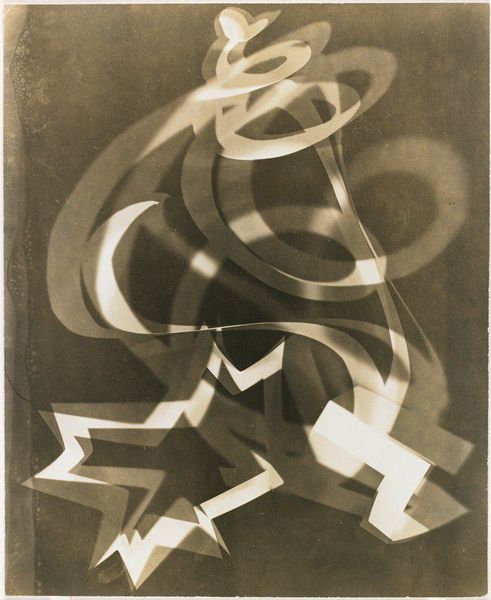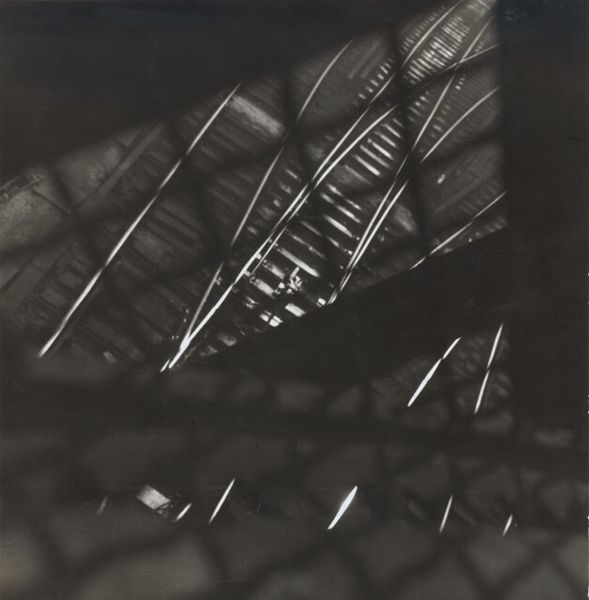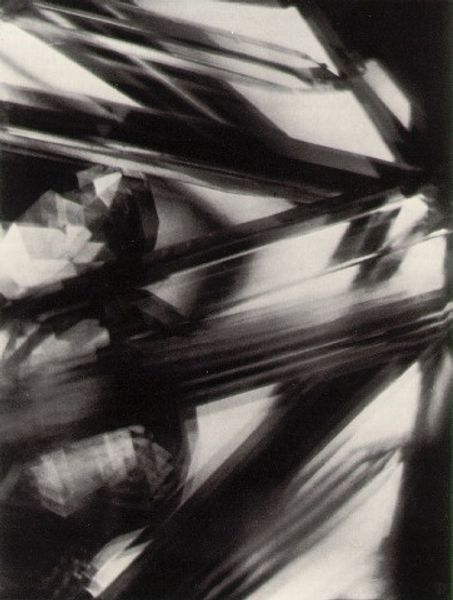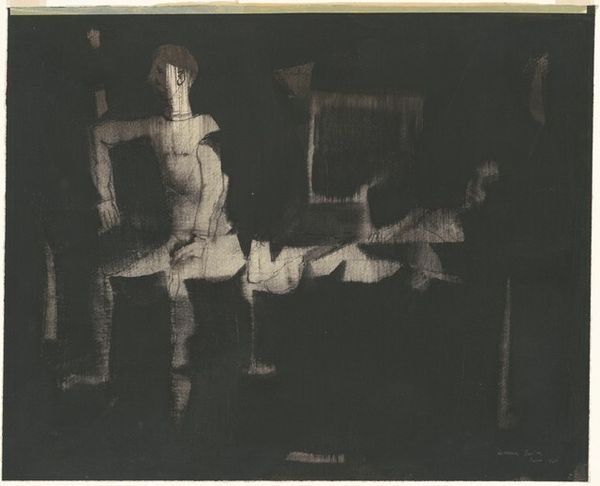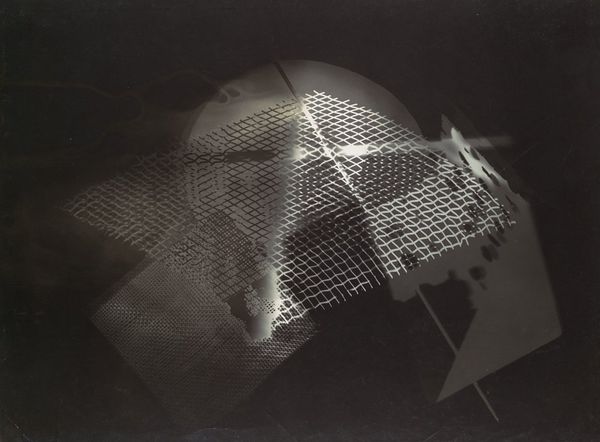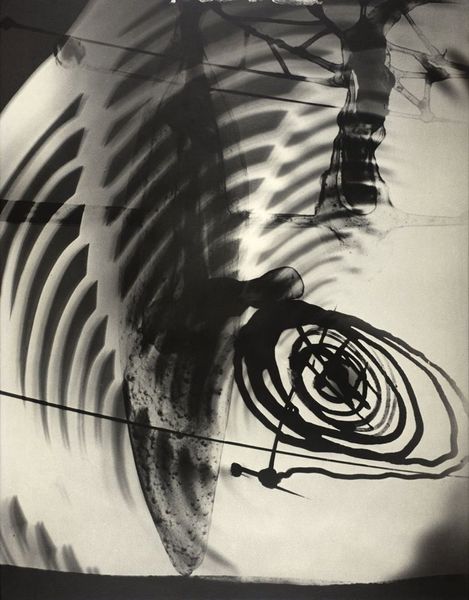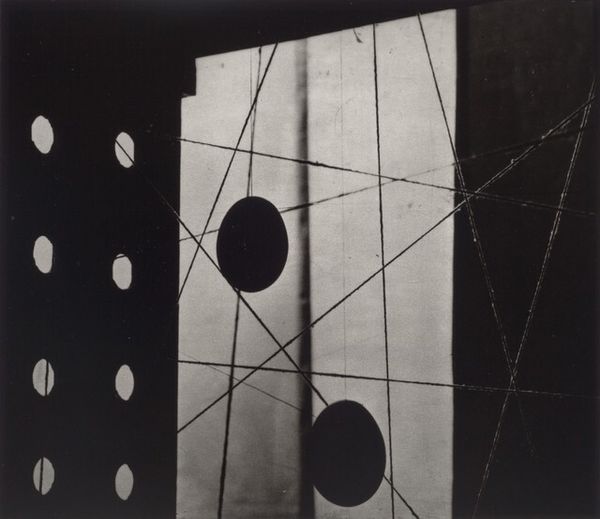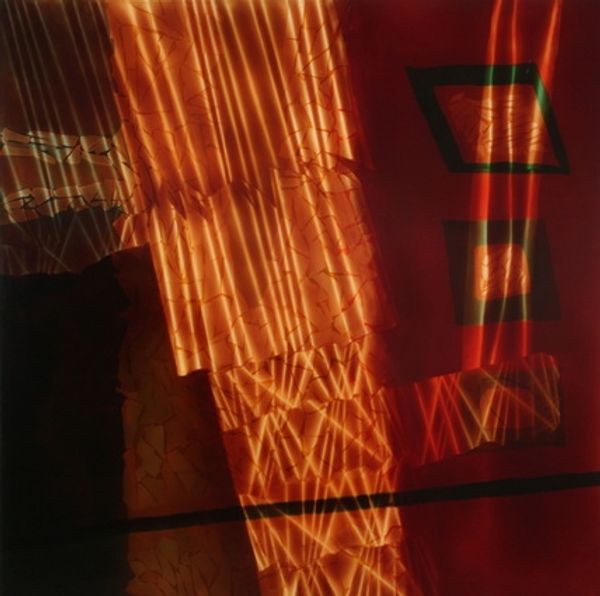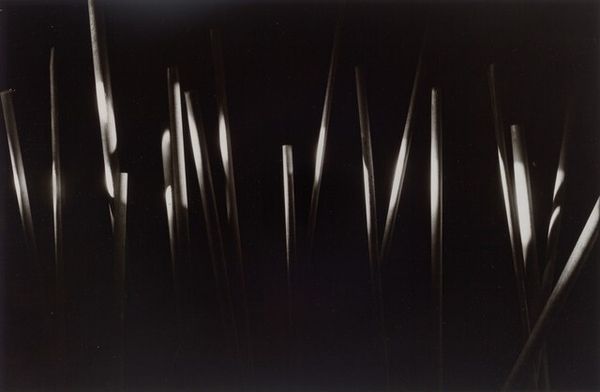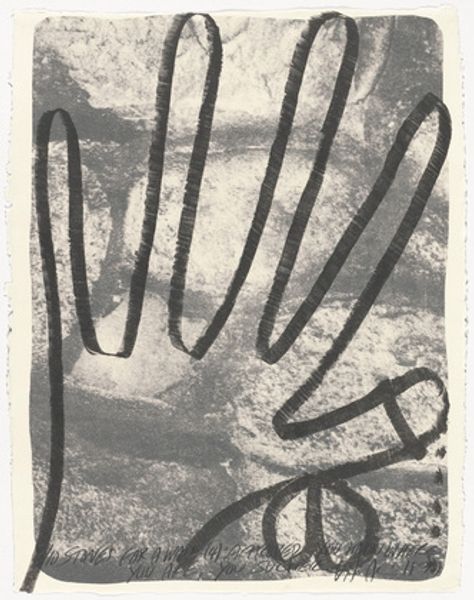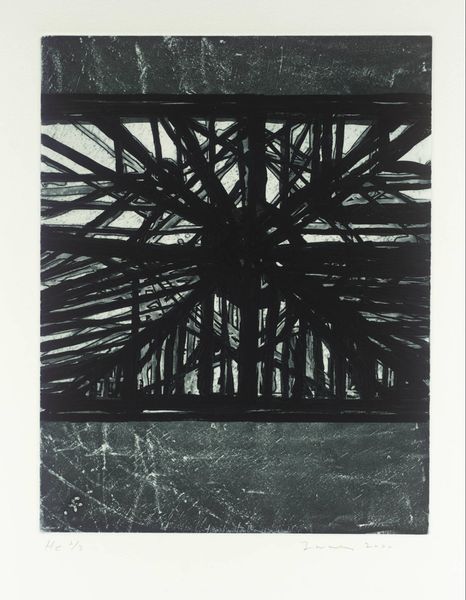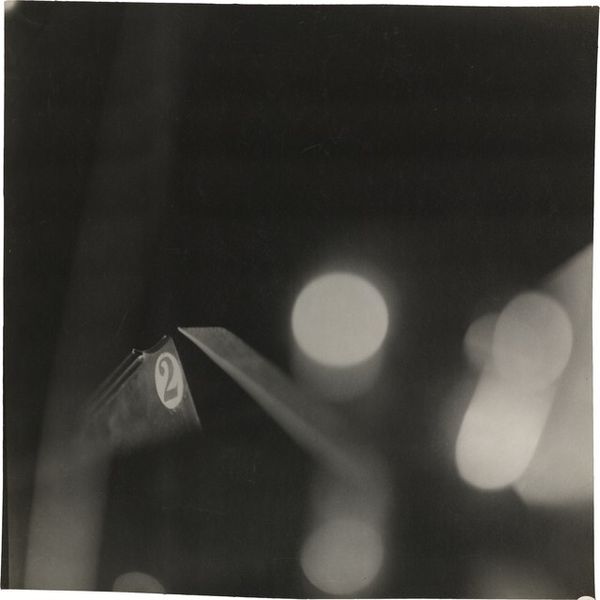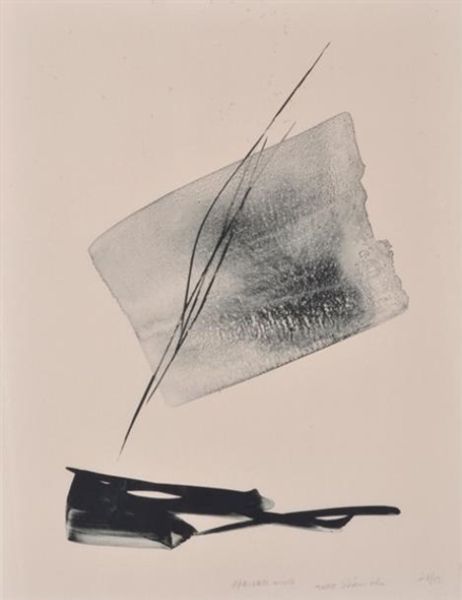
Dimensions: 11 3/4 x 9 5/16 in. (29.85 x 23.65 cm) (image)19 5/16 x 15 1/2 in. (49.05 x 39.37 cm) (mount)
Copyright: No Copyright - United States
Editor: So, this gelatin silver print, "Composition" by Jaromír Funke, circa 1927... It's intriguing, a very geometric, almost architectural feel, but also quite stark. What's your take on it? Curator: Well, considering its socio-political context, photography of this type served multiple purposes. The clean lines and industrial feel are partly a reflection of the machine age, which promoted functionalist Bauhaus ideals. These experimental photos helped construct an image of progress but it also had another public function: it proposed a 'new vision' of everyday things through art. The avant-garde Constructivist movement, for example, favored abstraction. Editor: Constructivist? So it's about building…like societal construction? Curator: Precisely. These images were not just formal exercises, they subtly influenced popular culture and helped construct a modern, forward-thinking identity for nations. By abstracting common forms into something…aspirational… artists like Funke engaged in shaping cultural values through their artwork. The formal construction then acts like a social instruction. See how radical the act of reframing basic shapes becomes! Editor: That's fascinating! It wasn't just "art for art's sake," but a kind of soft power? Changing perception. Curator: Absolutely. It prompts the question of how abstract works impact our societal perception and understanding. Where do you think a piece like this might be shown to the public and what do they learn? Editor: Well, putting it in a museum certainly elevates it, gives it importance and legitimizes a specific understanding of abstraction…Thanks, it has made me think differently about art's purpose. Curator: Likewise. Analyzing this work reveals how artistic expression interacts with societal and political climates, a dance of shaping visual cultures.
Comments
minneapolisinstituteofart about 2 years ago
⋮
Jaromír Funke was a leading figure of experimental Czech photography in the 1920s and 1930s. He was interested in revealing the aesthetic quality of insignificant objects, and he used mirrors and lights to transform his still-life arrangements into abstractions. Composition is from the Glass and Reflection series, in which the artist endeavored to use shadow and reflections to mimic the look of photomontage, a popular technique at the time, which involved cutting, arranging, and pasting together multiple photographs to produce a composite image.
Join the conversation
Join millions of artists and users on Artera today and experience the ultimate creative platform.
